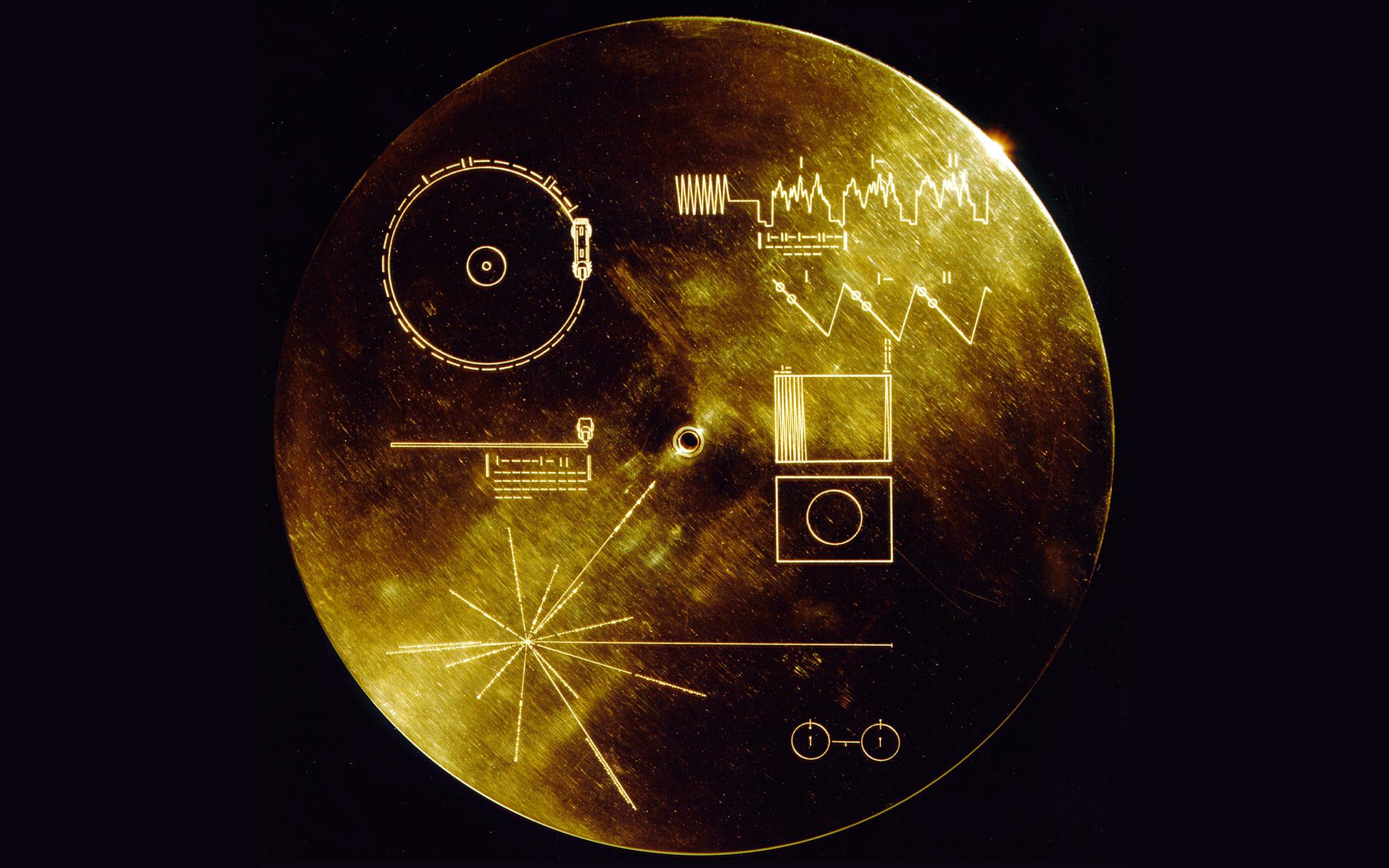As you read this sentence, a human-made object journeys alone in the darkness of interstellar space at a blazing 38,000 miles per hour.
Launched in 1977, the Voyager 1 spacecraft was commissioned to explore the outer regions of our solar system. Flying past Jupiter and Saturn, the spacecraft captured provocative images of these strange and relatively unknown planets and their moons. For the first time, human beings were able to see these planets up close rather than through the lens of an Earth-based telescope.
Three years after liftoff, Voyager 1 completed its primary mission. But those involved in the development of the space probe had something more in mind. They knew Voyager was on a one-way trip. Once it flew past Pluto, there was no possibility of return. So they had given Voyager a secondary mission: to reach out into the mystery of the unknown with a snapshot of human life.
The Voyager team commissioned the creation of a 12-inch golden phonograph record containing curated information about Earth, encased it in a protective aluminum jacket, and attached it to the outside of the spacecraft along with a cartridge and a needle that would allow the record to be played. They etched a diagram of a hydrogen atom to establish a base unit of measurement and symbols showing how to play the glimmering disc. To show where Earth is, they drew a map of our planet’s position in relation to 14 flickering stars called pulsars. Finally, the team included an ultra-pure sample of uranium-238, which decays at a predictable rate, to function as a radioactive clock so that anyone intercepting the spacecraft could decipher how long Voyager 1 had been traveling.
A small team supervised by famed astronomer Carl Sagan decided what the golden record would include. Due to technology constraints, the record could hold only “impressions” of Earth. So the team recorded 55 spoken greetings in different languages. They embedded a written message from U.S. President Jimmy Carter and United Nations Secretary-General Kurt Waldheim. They also included musical selections from different cultures around the world, including Bach compositions, a wedding song from Peru, Aboriginal Australian music, and Chuck Berry’s rock classic “Johnny B. Goode.”
Finally, they added 116 images of Earth and its inhabitants.
With such a limited number of images, the team tried to represent a vast and diverse array of life on planet Earth, including diagrams of human anatomy, DNA structure, cell division, the color spectrum, animals, plants, insects, landscapes, and varied examples of human culture, including food, architecture, and day-to-day activities. (Some of the images can be found online at voyager.jpl.nasa.gov/golden-record/whats-on-the-record/images/.)
Just as interesting as the images themselves is what they didn’t include. The team decided to leave out all depictions of war, poverty, disease, crime, and ideology.
This wasn’t meant as a calculated deception. Knowing Voyager would take 40,000 years to reach the nearest star with possible habitable planets, the team was hopeful that the version of humanity depicted on the golden record could someday be reality. Also, because this would likely be our first contact with alien life, the team wanted to make the best impression possible. Just like someone on a first date shouldn’t detail their worst attributes and personality traits, they didn’t want to introduce humanity to an advanced alien species by showing the ugly side of humanity.
But they also left out any depictions of religion.
If this sounds like a scientific conspiracy to undermine belief in the supernatural, it was not. The reason was simple (and more boring). Because of limited space, it was too difficult to depict the immense diversity of religious belief and practice in one or two images. In the end, they didn’t want one or two religions to represent all religious beliefs on planet Earth.
Unknowingly, however, they subtly embedded into the golden record their own belief system: a belief in the human spirit. Through hard work, determination, and science, the team had faith and hope that humanity might someday solve the problems that have chronically plagued us. This human-centered, optimistic vision of the future is summarized in a letter written by President Jimmy Carter (though himself a devout Christian) and placed inside the spacecraft:
This is a present from a small, distant world, a token of our sounds, our science, our images, our music, our thoughts and our feelings. We are attempting to survive our time so we may live into yours. We hope someday, having solved the problems we face, to join a community of galactic civilizations. This record represents our hope and our determination, and our good will in a vast and awesome universe.
Christians, too, are hopeful for a better future. Rather than centering their belief on human strength or ingenuity, however, Christians point to a loving God who will save the world through grace. Revelation 21: 4-6a says:
… ‘(God) will wipe every tear from their eyes. There will be no more death’ or mourning or crying or pain, for the old order of things has passed away.” He who was seated on the throne said, “I am making everything new! … I am the Alpha and the Omega, the Beginning and the End.”
Maybe one day far into the future, an advanced civilization will intercept Voyager 1. They will discover the golden record, decipher the instructions, and sift through the encoded images. The impression they’ll get of humanity will be beautiful, fragile, and rich in diversity—as President Carter said, “a token of our sounds, our science, our images, our music, our thoughts and our feelings.” But they will know nothing of our sad divisions. They will have no sense of the complexity of the human heart, bent toward selfishness but capable of so much sacrifice and beauty. They will have no indication of the addiction, pride, fear, and greed that persistently afflict every generation.
But maybe in those 116 images they’ll see our love. Maybe they will see our creativity, our uniqueness, our intellect. Maybe they’ll recognize in us something of the divine and understand that we are beings made in the image of God. As humanity reaches out toward the stars, the book of Revelation pulls back the curtain on reality and shows us a God who is bigger than Earth and its inhabitants, bigger than the solar system, bigger than the Milky Way galaxy. This God is the King of the whole universe, from start to finish. No depictions of religion were included on the golden record, but maybe one day aliens will see our sights and sounds, our world and our love, and say to themselves that they too know “the One who sits on the throne.”
Maybe one day we will have overcome the problems we face—not because we were smart and hardworking, but because “the Alpha and the Omega” came in humility as a human being and healed our world and our hearts from the inside out. Then the whole universe will see this pale blue dot aglow with the divine light of God’s love and grace, a world beaming with gratitude and joy, a twinkle of glorious light in the darkness of space.
About the Author
Sam Gutierrez is the Associate Director at the Eugene Peterson Center for the Christian Imagination at Western Theological Seminary. More of his creative work can be found at printandpoem.com









